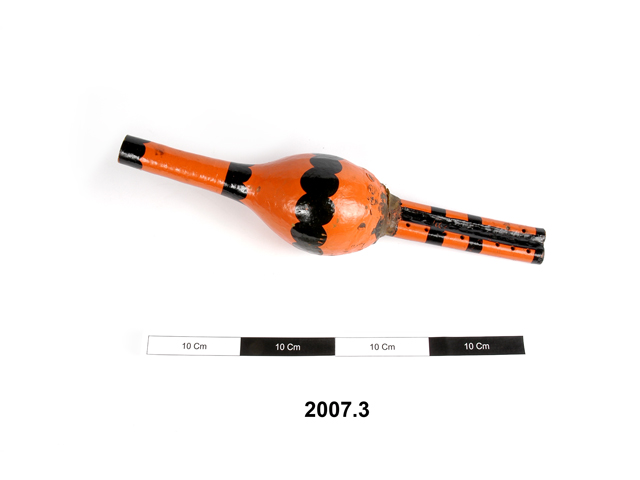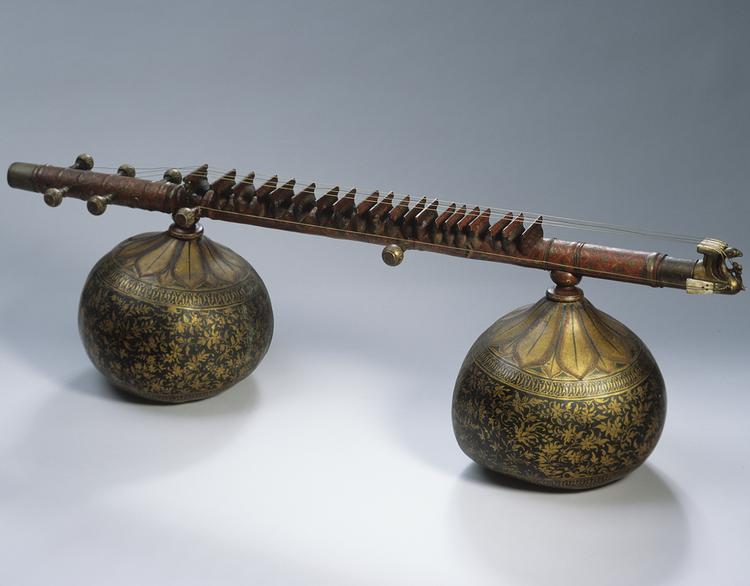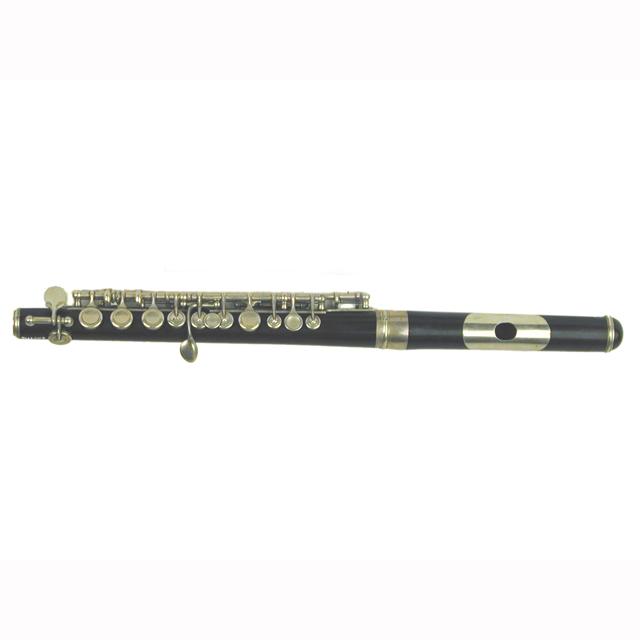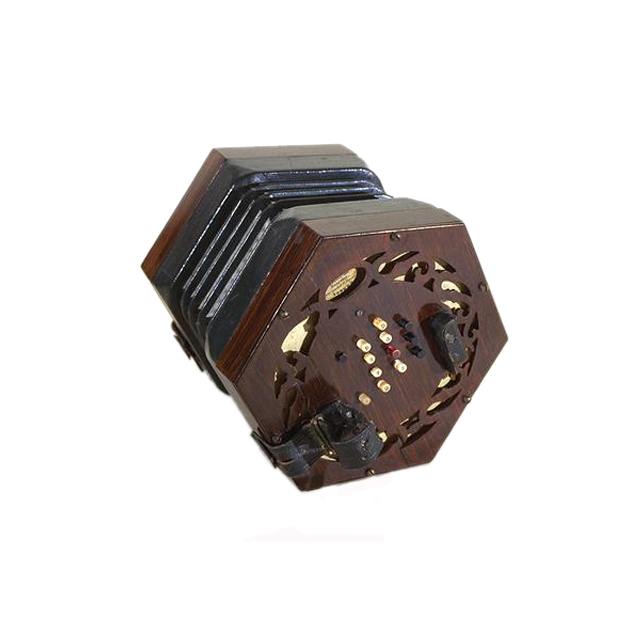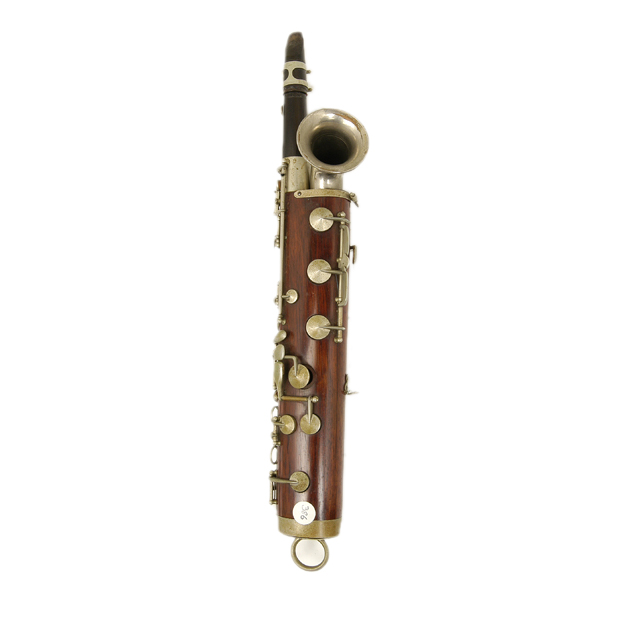
Octavin in B-flat. Rosewood with african blackwood (grenadilla) mouthpiece, nickel silver butt cap and ligature and nickel silver plated bell. Keys are pillar mounted with leather pads. Brille key and automatic octave keys. The three lowest keys are operated by the lower part of the left thumb. Conical bore. Configured as a double joint or butt with forward pointing bell. End cap bears a large metal ring.
The octavin is a conical-bore woodwind instrument resembling the butt joint of a bassoon with a clarinet mouthpiece and a metal bell attached. Musical instrument collectors seem to have considered it an interesting historical curiosity, and the Boosey & Hawkes Collection contains an example, while the Adam Carse Collection contains two. However, its apparent inability to find a niche in any musical culture has made it the subject of derision for a number of commentators. Anthony Baines describes it as having been 'uselessly invented by Jehring and Adler, Markneukirchen, 1894.' Lyndsay Langwill writes: 'The octavin, which attained no popularity, has a tone somewhat like that of the soprano saxophone but less pleasant', while Adam Carse laments that 'It is difficult to say exactly what was the purpose for which this quaint little instrument was intended; there is nothing to show that it was anything but still-born in Europe, although it may have found some appreciation in America. Most musical dictionaries ignore the octavin, and few musicians are aware that it ever existed.'



